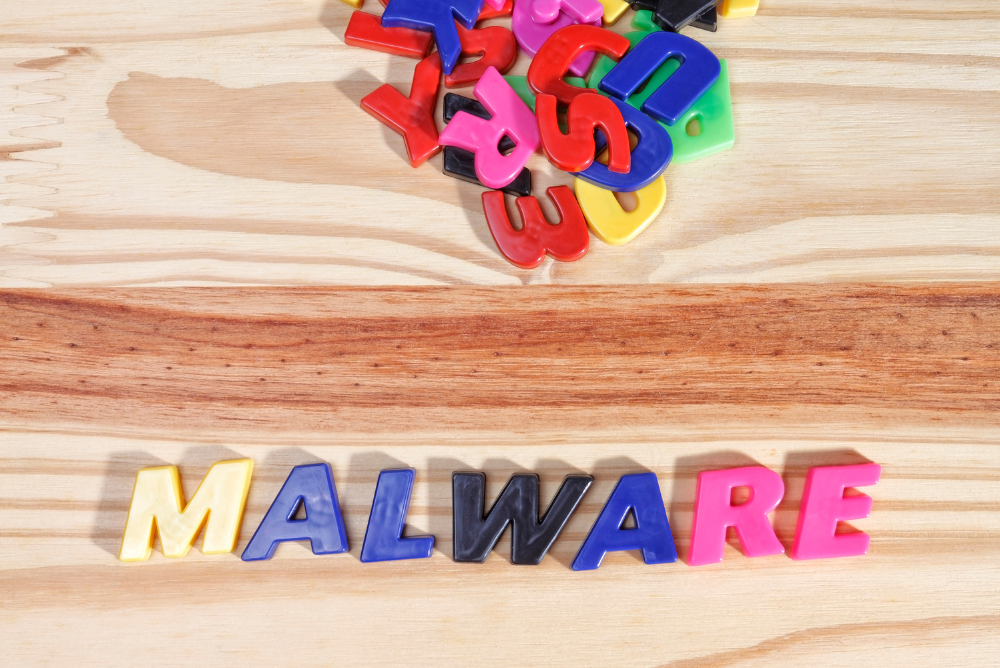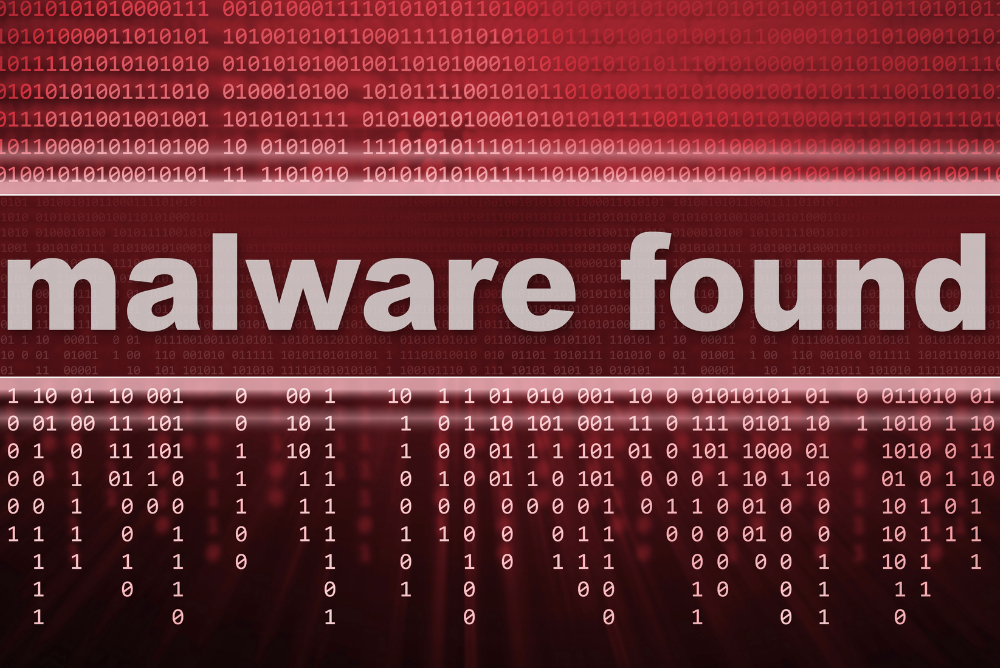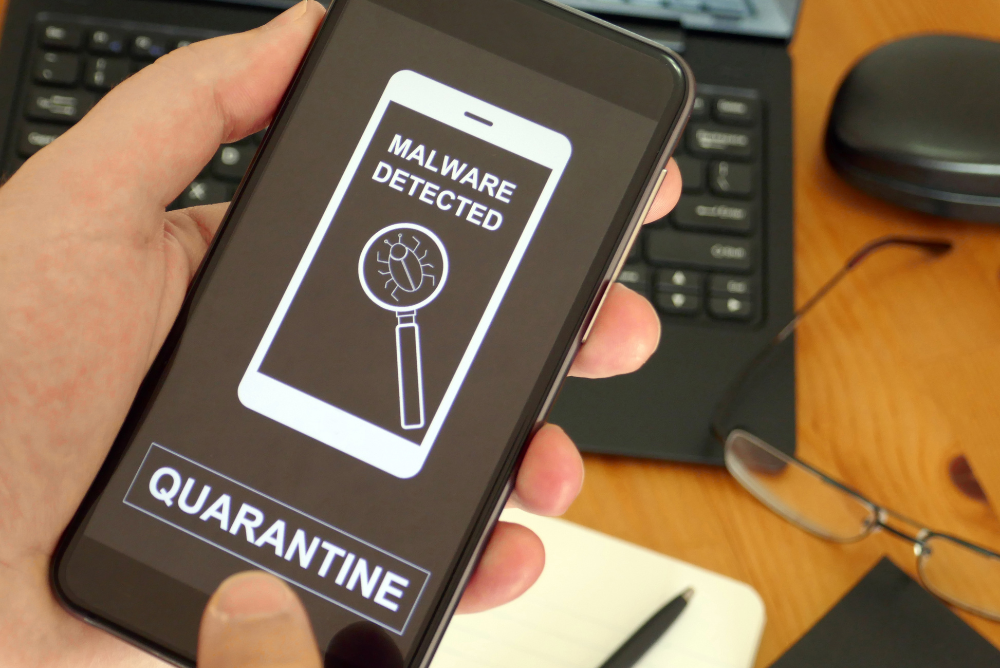THE TOP 13 WORST MALWARE YOU NEED TO KNOW ABOUT

Malware, or malicious software, is a major threat to computer systems around the world.
With the rise of the internet and the increasing reliance on technology in our daily lives, malware has become a growing concern for individuals, businesses, and governments alike.
In this article, we’ll take a closer look at some of the worst types of malware that have caused significant damage in recent years.
From ransomware to Trojan horses, botnets to rootkits, and worms to spyware, these malicious programs have wreaked havoc on computer systems and caused significant financial and reputational damage to those who have fallen victim to them.
What is a Malware?
Malware is a type of software that is designed to cause harm to computer systems or networks.
The term “malware” is short for “malicious software”, and includes a variety of different types of programs such as viruses, worms, Trojan horses, and ransomware.
Malware can be spread through infected email attachments, malicious websites, or by exploiting vulnerabilities in software or operating systems.
The effects of malware can vary depending on the type of malware and the severity of the infection.
Some malware is designed to steal sensitive information, such as personal or financial data, while other types can cause damage to files or operating systems, or use infected computers as part of a larger botnet to launch attacks on other systems.
Let us explore some of the worst types of malware that have wreaked havoc on computer systems in recent years.
1. Ransomware
Ransomware is a type of malware that encrypts the victim’s files and demands a ransom payment in exchange for the decryption key. In many cases, the victim’s files are permanently lost if the ransom is not paid.
Ransomware attacks have become increasingly common in recent years, with high-profile attacks targeting hospitals, government agencies, and businesses.
One of the most notorious ransomware attacks was the WannaCry attack in 2017, which affected hundreds of thousands of computers in more than 150 countries.
The attack exploited a vulnerability in Microsoft Windows and demanded a ransom payment in Bitcoin in exchange for the decryption key.
2. Trojan Horse
A Trojan horse is a type of malware that appears to be a legitimate program but is actually designed to give an attacker unauthorized access to a computer system.
Trojan horses can be used to steal sensitive data, install additional malware, or launch attacks on other systems.
One of the most notorious Trojan horse attacks was the Zeus Trojan, which infected millions of computers around the world and stole more than $100 million from bank accounts.
The Zeus Trojan was often spread through phishing emails and infected computers by tricking users into downloading a legitimate-looking program that actually contained the malware.
3. Botnets
Botnets are networks of infected computers that can be controlled remotely by an attacker.
Botnets can be used for a variety of purposes, such as launching distributed denial-of-service (DDoS) attacks, sending spam emails, or mining cryptocurrency.
One of the largest botnet attacks in history was the Mirai botnet attack in 2016, which infected more than 600,000 IoT devices and launched a massive DDoS attack on the DNS provider Dyn.
The attack caused widespread outages for popular websites, including Twitter, Netflix, and PayPal.
4. Rootkits
A rootkit is a type of malware that is designed to hide its presence on a computer system. Rootkits can be used to gain unauthorized access to a system, steal data, or launch attacks on other systems.
One of the most well-known rootkit attacks was the Sony BMG copy protection rootkit scandal in 2005. Sony BMG had included a rootkit on millions of music CDs in an attempt to prevent piracy.
The rootkit was discovered to be a serious security risk, as it could be used by attackers to gain unauthorized access to a computer system.

5. Worms
Worms are self-replicating malware that can spread rapidly through computer networks. Worms can be used to launch attacks on other systems, steal data, or cause widespread disruption.
One of the most notorious worm attacks was the Conficker worm, which infected millions of computers around the world in 2008 and 2009.
The worm exploited a vulnerability in Microsoft Windows and could spread through unpatched computers without the need for any user interaction.
Top 13 Worst Malware Attacks
1. WannaCry
WannaCry is a type of ransomware that was first discovered in 2017. It is a destructive form of malware that is designed to encrypt the files on infected computers and demand payment in exchange for the decryption key.
WannaCry caused significant damage in 2017. The attack affected over 200,000 computers in 150 countries, including the UK’s National Health Service (NHS).
WannaCry is typically spread through a vulnerability in Microsoft Windows that was exploited by the malware.
The vulnerability, known as EternalBlue, was originally discovered by the U.S. National Security Agency (NSA) and later leaked by a hacking group.
Once installed, WannaCry is able to spread rapidly through corporate networks and infect a large number of computers.
One of the characteristics of WannaCry is its ability to use worm-like techniques to spread across networks, allowing it to infect a large number of computers in a short period of time.
The malware also included a kill switch that could be activated to stop its spread, but only after it had already caused significant damage.
2. NotPetya
NotPetya, also known as ExPetr or PetrWrap, is a type of malware that was first discovered in 2017.
It is a destructive form of ransomware that is designed to encrypt the files on infected computers and demand payment in exchange for the decryption key.
However, in the case of NotPetya, it was later revealed that the malware was not designed for ransom, but rather to cause widespread damage and disruption.
NotPetya caused significant damage in 2017. The attack affected several major companies, including Maersk, FedEx, and Merck.
NotPetya exploited a vulnerability in a popular accounting software and demanded a ransom payment in Bitcoin in exchange for the decryption key.
NotPetya is typically spread through infected software updates or phishing emails that contain a malicious attachment or link.
Once installed, NotPetya is able to spread rapidly through corporate networks and infect a large number of computers.
One of the characteristics of NotPetya is its ability to use a variety of techniques to infect and spread across networks, including exploiting a vulnerability in Microsoft Windows and using legitimate system tools to move laterally across a network.
3. Stuxnet
Stuxnet is a type of computer worm that was discovered in 2010.
It is a sophisticated form of malware that is designed to infiltrate industrial control systems (ICS) and cause physical damage to critical infrastructure, such as power plants and nuclear facilities.
The attack targeted the Iranian nuclear program in 2010 and caused significant damage to uranium enrichment centrifuges.
Stuxnet is typically spread through infected USB drives and is designed to exploit a vulnerability in Siemens industrial control software.
Once installed, the malware is able to take control of ICS and cause physical damage to equipment by altering the frequency of motor speeds and other processes.
One of the characteristics of Stuxnet is its level of sophistication, which suggests it was designed to be used as a cyberweapon by a nation-state.
Stuxnet was also able to evade detection by many anti-malware programs and contained a number of self-replicating and self-destruct mechanisms, making it difficult to analyze and contain.

4. Zeus
Zeus, also known as Zbot, is a type of Trojan malware that was first discovered in 2007.
It is designed to steal sensitive information such as login credentials, banking information, and other personal data from infected computers.
The attack infected millions of computers around the world and stole more than $100 million from bank accounts.
Zeus is typically spread through phishing emails that contain a malicious attachment or link, or through drive-by downloads from infected websites.
Once installed, Zeus can remain undetected on an infected computer, allowing hackers to continue to steal data and monitor network activity.
One of the most notable characteristics of Zeus is its ability to customize its attack methods based on the target’s location, language, and other factors.
This makes it highly effective at stealing sensitive information from individuals and organizations around the world.
5. Mirai
Mirai is a type of malware that is designed to infect and control internet of things (IoT) devices, such as routers, security cameras, and digital video recorders (DVRs).
Mirai was first discovered in 2016 and caused significant disruption to internet services worldwide.
Mirai launched a massive distributed denial-of-service (DDoS) attack on the DNS provider Dyn in 2016. The attack caused widespread outages for popular websites, including Twitter, Netflix, and PayPal.
Mirai typically spreads by exploiting vulnerabilities in IoT devices that have weak or default passwords, allowing the malware to gain access and control the device.
Once infected, the device becomes part of a larger botnet that can be used to launch distributed denial-of-service (DDoS) attacks on targeted websites, causing them to become overwhelmed with traffic and crash.
One of the most notable characteristics of Mirai is its ability to infect a wide range of IoT devices, making it difficult to detect and contain.
Mirai is also able to adapt and evolve, with new variants appearing that are able to target different types of IoT devices and use new attack methods.
To protect against Mirai and other types of IoT malware, it is important to change default passwords on IoT devices and use strong, unique passwords for each device.
Regularly updating the firmware and software on IoT devices can also help to address vulnerabilities and prevent infection.
Additionally, using network segmentation and monitoring network traffic can help detect and prevent the spread of Mirai and other types of IoT malware.
6. Conficker
Conficker is a type of computer worm that was first discovered in 2008.
It is designed to exploit a vulnerability in Microsoft Windows and spread through infected computers over the internet or through removable media such as USB drives.
Conficker caused significant damage and disruption to computer systems worldwide, infecting millions of computers and causing billions of dollars in damage.
One of the most notable characteristics of Conficker was its ability to spread quickly and easily, using a variety of tactics such as network propagation and brute-force password cracking.
Conficker was also designed to update itself and adapt to changes in security measures, making it difficult to detect and remove.
7. Flame
Flame is a type of advanced persistent threat (APT) malware that was discovered in 2012.
It is a sophisticated form of malware that is designed to infiltrate computer systems and collect sensitive information, particularly from high-profile targets such as government agencies and critical infrastructure providers.
The attack targeted government agencies and organizations in the Middle East and collected sensitive information, such as email conversations and keystrokes.
Flame is typically spread through infected email attachments or compromised websites.
Once the malware is installed, it can remain undetected for long periods of time, allowing hackers to continue to steal data and monitor network activity.
Flame is designed to collect information such as login credentials, system information, and other sensitive data. It is also able to capture and record audio and video from infected computers, making it particularly intrusive.
One of the most notable characteristics of Flame is its large size, with some versions of the malware exceeding 20 megabytes.
This made it difficult to detect and remove, and allowed hackers to use the malware for a variety of malicious activities.
8. Duqu
Duqu is a type of advanced persistent threat (APT) malware that was discovered in 2011.
It is a sophisticated form of malware that is designed to infiltrate computer systems and steal sensitive information, particularly from high-profile targets such as government agencies and critical infrastructure providers.
Duqu is typically spread through infected email attachments or compromised websites. Once the malware is installed, it can remain undetected for long periods of time, allowing hackers to continue to steal data and monitor network activity.
Duqu is designed to collect information such as login credentials, system information, and other sensitive data.
One of the most notable characteristics of Duqu is its modular design, which allows it to be customized and reconfigured for different targets and purposes.
This makes it difficult to detect and remove, and allows hackers to use the malware for a variety of malicious activities.

9. Pegasus
Pegasus is a type of spyware that was first discovered in 2016. It is designed to infiltrate mobile devices, such as smartphones and tablets, and collect sensitive information, such as text messages, emails, and call logs.
Pegasus is typically spread through targeted phishing attacks that lure victims into clicking on a malicious link or downloading a compromised application.
One of the most notable characteristics of Pegasus is its ability to evade detection and remain undetected on infected devices.
It is also designed to be very difficult to trace back to its source, making it a highly effective tool for hackers and cybercriminals.
10. Darkhotel
Darkhotel is a type of advanced persistent threat (APT) malware that was first discovered in 2014.
It is a sophisticated form of malware that is designed to infiltrate computer systems and steal sensitive information, particularly from high-profile individuals such as executives, government officials, and diplomats.
Darkhotel is typically spread through phishing emails that are tailored to specific targets, making them more convincing and more likely to be opened.
Once the malware is installed, it can remain undetected for long periods of time, allowing hackers to continue to steal data and monitor network activity.
One of the most notable characteristics of Darkhotel is its use of zero-day vulnerabilities to infect computers.
Zero-day vulnerabilities are security flaws that are not yet known to the software manufacturer or security community, making them particularly effective for hackers to exploit.
Darkhotel is also able to detect when an infected computer is attempting to connect to a secure website and can intercept and steal login credentials and other sensitive information.
11. Sasser
Sasser is a type of computer worm that was discovered in 2004.
It was designed to exploit a vulnerability in Microsoft Windows and spread through infected computers over the internet, without the need for any user interaction.
Sasser caused widespread disruption by randomly shutting down or restarting infected computers, causing significant financial losses for affected businesses and individuals.
One of the most notable characteristics of Sasser was its ability to spread quickly and easily, infecting millions of computers within days of its release.
This made it difficult for security experts to contain the virus and minimize the damage it caused.
12. MyDoom
MyDoom, also known as Novarg, is a type of computer worm that was first discovered in 2004. It is one of the fastest-spreading worms in history and caused significant damage to computer systems worldwide.
MyDoom was typically spread through infected email attachments that appeared to be from a trusted source.
Once the attachment was opened, the worm would replicate itself and spread to other computers on the same network.
The worm also contained a backdoor that allowed hackers to gain access to infected computers and use them to launch further attacks or send spam emails.
One of the most notable characteristics of MyDoom was its ability to launch a distributed denial-of-service (DDoS) attack on the website of the SCO Group, a software company that was embroiled in a high-profile lawsuit at the time.
The DDoS attack caused significant disruption to the company’s website and the case was eventually dropped due to the overwhelming response from the attack.
13. Code Red
Code Red is a type of computer worm that was discovered in 2001.
It was designed to exploit a vulnerability in Microsoft Windows and spread through infected computers over the internet, using a technique known as a buffer overflow attack.
Code Red caused widespread disruption by launching distributed denial-of-service (DDoS) attacks on targeted websites, causing them to crash and become inaccessible.
One of the most notable characteristics of Code Red was its ability to spread quickly and easily, infecting millions of computers within days of its release.
This made it difficult for security experts to contain the virus and minimize the damage it caused.

How to Protect Against Malware?
Protecting against dangerous malware requires a combination of proactive measures and reactive responses. Here are some key steps that can be taken to protect against malware:
Keep software up-to-date: Regularly updating software, including operating systems, web browsers, and anti-malware software, can help to address vulnerabilities and prevent infection.
Use strong passwords and two-factor authentication: Strong passwords and two-factor authentication can help to protect sensitive data from being stolen.
Be cautious when clicking on links and downloading attachments: Avoid clicking on links from unknown sources and downloading suspicious email attachments.
Backup critical data regularly: Backing up critical data on a regular basis can help to ensure that data can be restored in the event of an attack.
Use reputable anti-malware software: Using reputable anti-malware software can help to detect and remove malware from infected systems.
Implement network segmentation: Segmenting networks and restricting access to sensitive information can help to limit the spread of malware in the event of an attack.
Conduct regular security audits: Conducting regular security audits and risk assessments can help to identify vulnerabilities and improve security measures.
By taking these proactive steps, individuals and organizations can help to reduce the risk of infection from dangerous malware.
However, in the event of an attack, it is important to have a plan in place to respond quickly and effectively to minimize damage and recover as quickly as possible.
Frequently Asked Questions
What type of virus is ILOVEYOU?
ILOVEYOU is a type of computer virus, specifically a type of malware known as a worm. It was one of the most destructive computer viruses ever created and caused widespread damage in May 2000.
The virus was spread through email as an attachment with a subject line that read “ILOVEYOU” and was disguised as a love letter.
Once the attachment was opened, the virus would replicate itself, overwrite files, and spread to other computers. It caused billions of dollars in damage and infected millions of computers worldwide.
Do you know what makes Sasses one of the worst computer viruses?
Sasser is considered one of the worst computer viruses in history because of the speed and intensity with which it spread, and the disruption it caused to computer systems worldwide.
Sasser exploited a vulnerability in Microsoft Windows and spread through infected computers over the internet, without the need for any user interaction.
The virus caused infected computers to randomly shut down or restart, causing widespread disruption to businesses and individuals alike.
What made Sasser particularly insidious was its ability to spread quickly and easily, infecting millions of computers within days of its release in 2004.
This caused significant financial losses for affected companies and individuals, and disrupted critical services, such as emergency response systems and air travel.
In addition, Sasser had the potential to compromise sensitive information, such as personal data and financial information, which added to the severity of its impact.
Fortunately, software patches were quickly released to address the vulnerability exploited by Sasser, and most anti-virus software was updated to detect and remove the virus.
What are the 3 most common types of malware?
1. Viruses: A computer virus is a type of malware that is designed to replicate itself and spread to other computers through infected files, software or email attachments. Once it infects a computer, it can cause damage to files, software, and operating systems.
2. Trojan horses: A Trojan horse is a type of malware that is disguised as legitimate software or a file, but once downloaded and executed, it can allow hackers to gain access to the infected computer and steal sensitive data or cause other harm.
3. Ransomware: Ransomware is a type of malware that encrypts a victim’s files or data and demands payment in exchange for the decryption key to restore access to the data. This type of malware is often spread through infected email attachments or malicious websites.
Conclusion
Malware attacks continue to be a major threat to computer systems and networks around the world. The rise of sophisticated attacks, such as ransomware and botnets, highlight the importance of taking proactive steps to protect our devices and data.
While there is no foolproof way to prevent malware attacks, staying informed about the latest threats and taking the necessary precautions to keep ourselves and our devices safe can go a long way in reducing the risk of falling victim to these attacks.
By practicing safe online behavior, keeping software up-to-date, and using antivirus software, we can help to minimize the risks and ensure that our online experience remains safe and secure.
As technology continues to evolve, so too will the threats we face from malware attacks, making it more important than ever to stay informed and prepared.
Don’t leave your business vulnerable to cyber threats – partner with Cyb-Uranus to develop a strong and effective cyber security program.
Whether you’re a start-up or a small-to-medium-sized enterprise, our team of experts is here to provide tailored solutions to protect your assets and data from potential breaches.
With our extensive experience and cutting-edge technology, you can rest assured that your business is in good hands. Contact us today to learn more and take the first step towards a safer and more secure future for your business.

